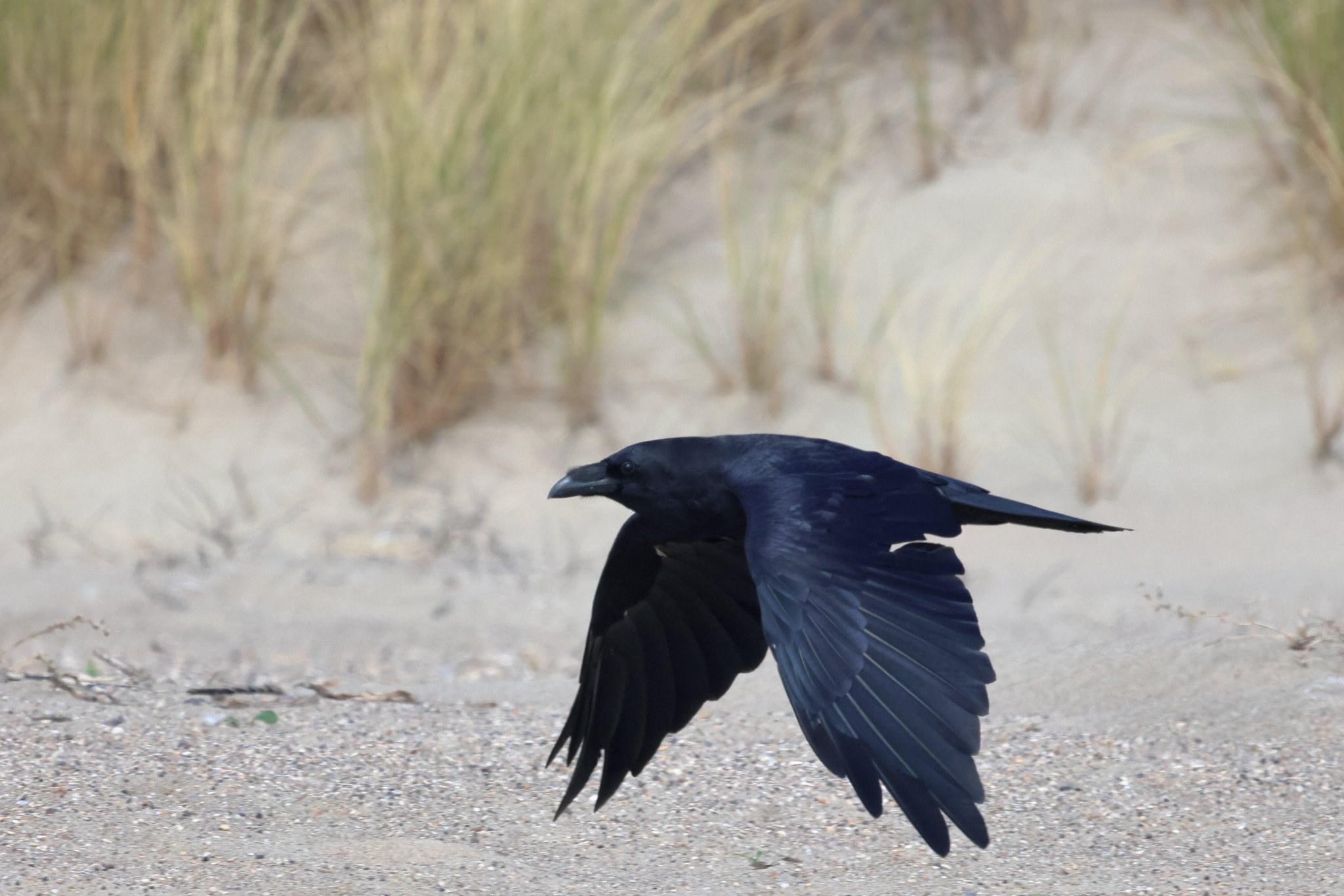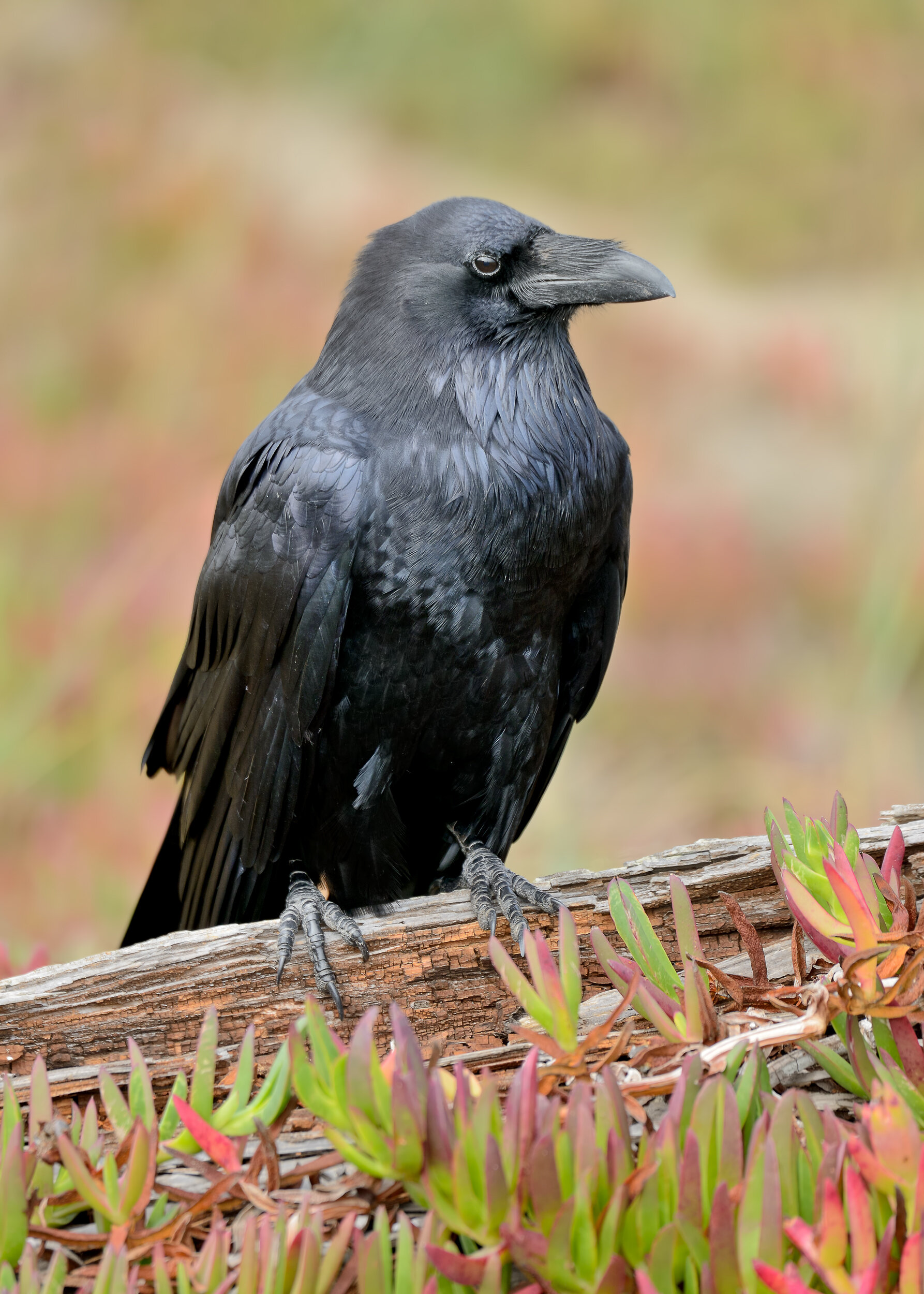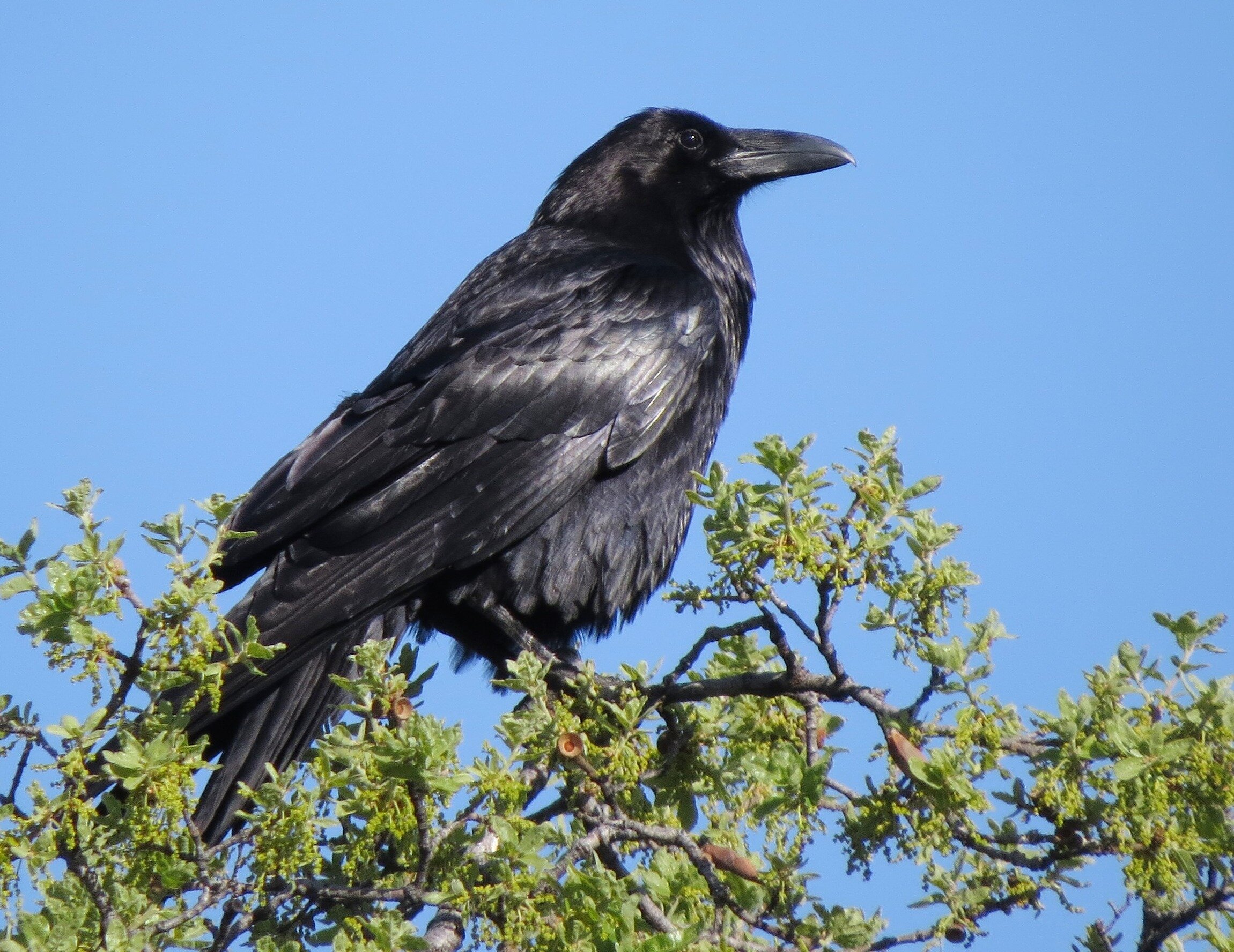Adult Common Raven, Image by Timothy Jackson
This month, let’s learn about a member of the Covidae family called the Common Raven. Crows, magpies, and jays are also in this family. Common Ravens have been observed in the Sacramento Valley more often in recent years. In the past, ravens were mainly seen at higher elevations or in rural or coastal areas; whereas American Crows were only seen here in the valley. So now, there are two species in the area that look quite similar. The main differences between Common Ravens and American Crows are size, tail shape, beak size, and the sounds they make. Common Ravens are larger overall, have diamond-shaped tails, have longer and narrower wings, and have larger and thicker beaks. They also soar or glide in the air and do less flapping than crows do. Adult Common Ravens are frequently seen in pairs, rather than in flocks. However, juvenile (or young) birds, that aren’t old enough for nesting yet, frequently form small groups. Common Ravens are also seen in numbers at garbage dumps searching for food.
Common Ravens tend to be permanent residents in their territories and do not migrate. They are found in the U.S. (especially the western states), Canada, Mexico, Europe, Africa, and South America. Common Ravens used to be common in the North Eastern U.S., but their populations declined severely after forests were cut down. However, their numbers have increased in recent years because trees have had time to regrow.
Common Ravens are extremely intelligent birds. They are quick learners and great problem solvers. Common Ravens don't need to rely on the trial and error method that many other birds use when tackling problems; they can actually come up with successful solutions right away. Common Ravens have been known to use tools to obtain food and make shelters. They even “plan for the future'' by hiding both food and tools for later.
Common Ravens can be quite acrobatic when flying. They can be seen diving and tumbling in the air. One was recorded flying upside down for more than a half-mile! Young birds are fond of playing games with sticks, repeatedly dropping them, and then diving to catch them in midair.
What do Common Ravens look like?
Common Raven, Image by Daniel Lee Brown
Common Ravens are large, shiny, all-black birds that are slightly larger than Red-tailed Hawks. They have large, thick, and slightly curved beaks, thick necks, and long, narrow wings that span 4 ½ feet. Common Ravens also have long, diamond-shaped (or wedge-shaped) tails. There are long feathers on their throats (called “hackles”) which make this area appear shaggy. Juveniles have gray neck feathers, are not as shiny, have shorter tails, and have violet or blue-gray eye color.
Where do Common Ravens live?
Common Ravens live in many different habitats including forests, dry grasslands, sagebrush, desert, and even arctic regions. They are usually found in rural areas. Because Common Ravens are so intelligent, it is easy for them to adapt to many different environments. Some actually live in the city of Los Angeles!
Common Raven pairs can remain together for life and will defend their nesting territories from other raven pairs. They usually have one clutch ( group of eggs in a nest) per year. Common Raven nests are built in trees or on cliff sides, and sometimes on structures such as power-line towers, telephone poles, billboards, and bridges. Nests are frequently reused and reinforced the following year. They make their nests out of sticks, grasses, bark strips, moss, fur, wool, mud, and sometimes trash. Female Common Ravens incubate the eggs (to sit on and keep nest eggs warm), while the male both guards the nest and brings food to the nest. After fledging (leaving the nest), young birds can remain near their parents for up to six months. Both parents help feed the fledglings.
Adult Common Raven, Image by Chris Conard
What do Common Ravens eat?
Common Ravens have a wide-ranging, omnivorous diet (which means they eat both plant and animal sources for food). They are quite skilled at finding many types of foods depending on habitat and availability. Common Ravens eat carrion (dead animal meat), bird eggs, insects, scorpions, grains, acorns, buds, small live animals (which include amphibians, reptiles, small mammals, and nesting birds), berries and other fruit, pet food, and food waste left by humans. Recently, there has been concern with the negative effect brought on by Common Ravens regarding the population of local nesting shorebirds. Now that Common Ravens are more common in the Sacramento Valley, they have discovered that nesting shorebird species are an easy target for food.
What do Common Ravens sound like?
Common Ravens have a wide range of vocalizations. Their calls have been described as croaking, screaming, whistling, knocking, and musical-like gurgling. The most common call of the Common Raven is a harsh and low-pitched croak or “wonk - wonk'' sound.
Common Ravens use various sounds for specific times. They have sounds used as alarm calls, chase calls, comfort calls, flight calls, and calls for advertising their territory. Common Ravens can also mimic (or copy) sounds from their environment. You can listen to the Common Raven now.



